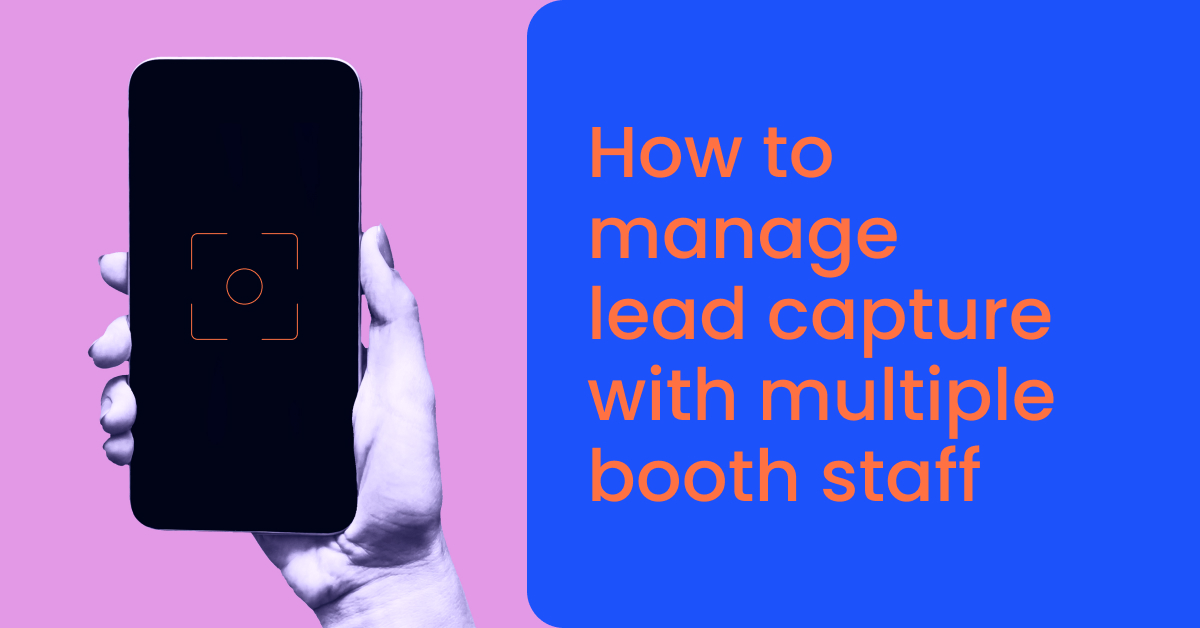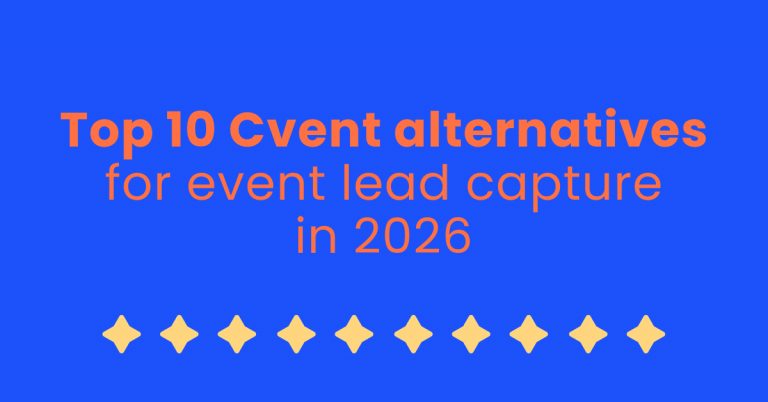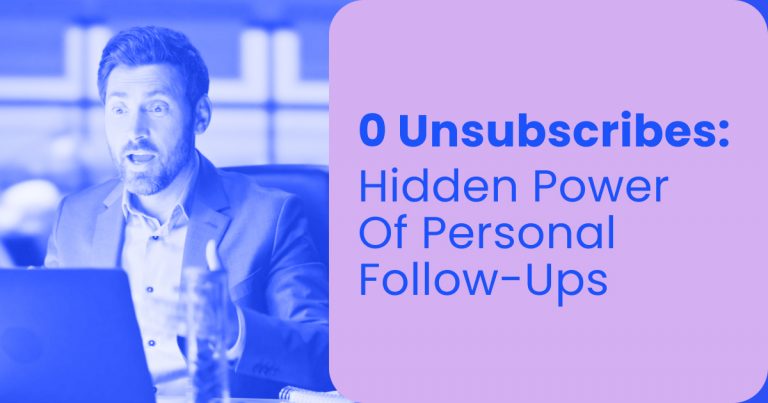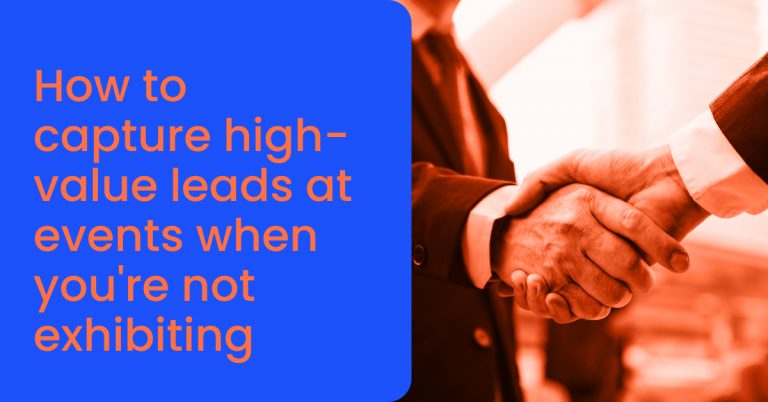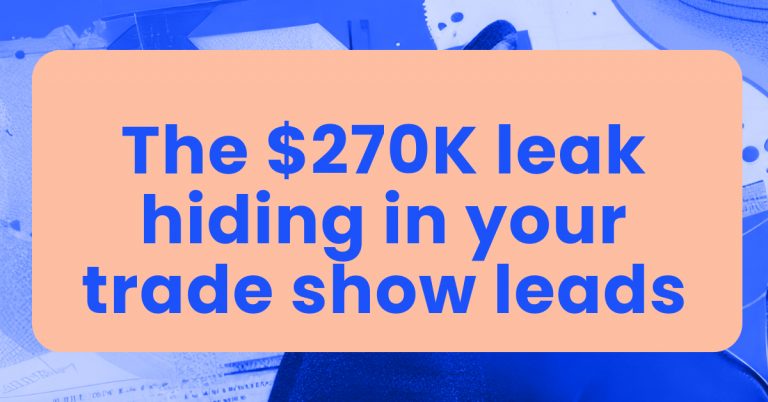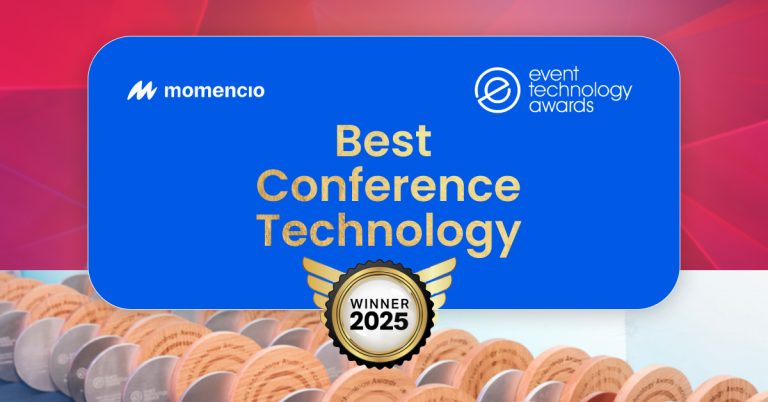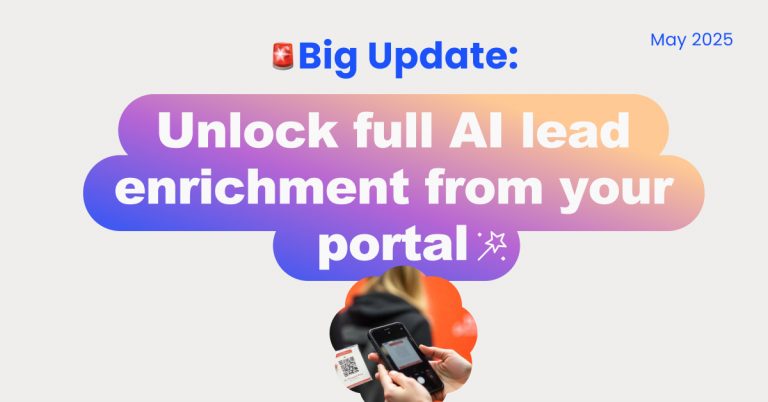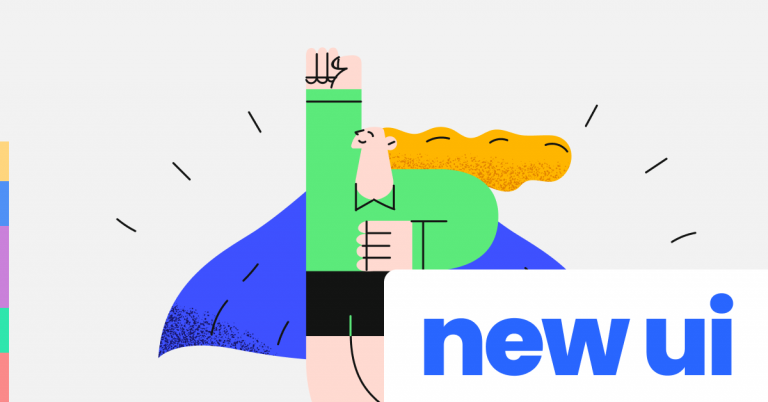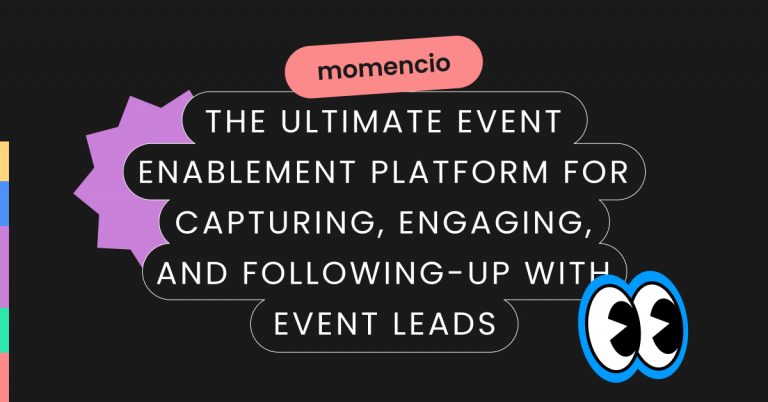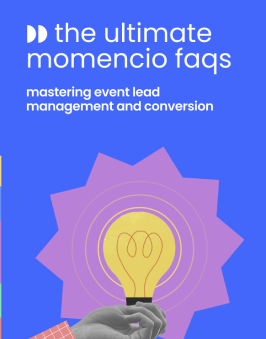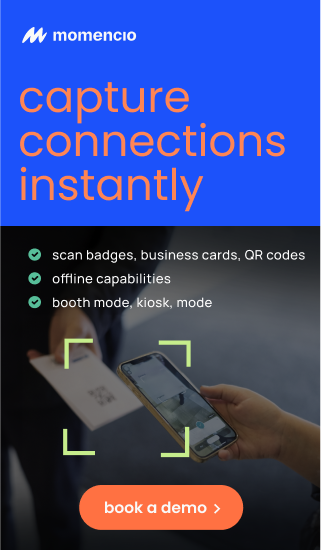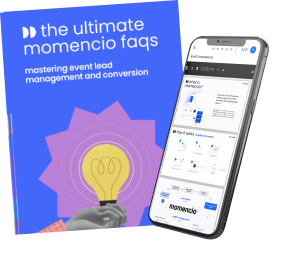Running a trade show booth with multiple team members should multiply your lead capture potential. Instead, it often creates chaos: duplicate leads, inconsistent qualification, missed follow-ups, and confused prospects receiving conflicting information from different reps.
The problem isn’t your team or cracking ways to manage lead capture—it’s the lack of systems designed for coordination. When three reps capture the same lead with different notes, different qualification criteria, and different follow-up promises, you’re not just wasting effort. You’re actively damaging conversion rates.
Here’s how to transform your multi-rep booth from a liability into a revenue engine.
The duplicate lead problem you can’t ignore
Let’s understand this with a simple scenario – a qualified prospect visits your booth early on day one. Sarah from your team captures their information, rates them as hot, and promises a technical demo within 48 hours. Two hours later, the same prospect returns with a colleague. Mike, unaware of the earlier interaction, scans the badge again, asks the same qualifying questions, and promises different follow-up materials.
By day two, this prospect has been captured three times by three different reps. Your CRM now has three separate records with conflicting data. Nobody knows who owns the lead. The promised demo never happens because everyone assumed someone else would handle it.
This isn’t a hypothetical scenario. According to industry data, companies lose an average of 12% of revenue due to poor data quality, and events are where this problem is most visible. When you’re processing hundreds of leads across multiple team members, duplicate records aren’t just annoying—they’re killing your conversion rates.
Common coordination failures at multi-rep booths
| Problem | Impact | Frequency |
| Duplicate badge scans | Conflicting CRM records, prospect confusion | 47% of booths |
| Inconsistent qualification | Hot leads marked cold, sales prioritization failure | 62% of booths |
| Conflicting follow-up promises | Brand credibility damage, lost deals | 38% of booths |
The right way to structure multi-rep lead capture
Effective coordination starts before the event. Your team needs three things: unified qualification criteria, real-time visibility into who captured what, and automated duplicate detection.
Establish universal qualification standards
Every rep should use identical qualifying questions and scoring criteria. This isn’t about rigid scripts—it’s about consistent data structure. When Sarah asks about budget timeline and Mike asks about decision-making authority, you’re capturing incomparable data.
Use your lead capture app to create standardized qualification forms that every team member must complete. Include mandatory fields for critical qualification factors like budget authority, project timeline, and current solution gaps. This ensures every lead, regardless of who captured it, contains the same intelligence for sales follow-up.
momencio’s custom qualification forms support branching logic, allowing your qualification process to adapt based on prospect responses while maintaining data consistency. For example, if a prospect indicates they’re evaluating solutions now, the form automatically presents timeline and budget questions. If they’re in early research, it focuses on pain points and requirements instead.
Implement real-time duplicate detection
The moment a badge is scanned, your system should check if that contact already exists in your event database. If they do, the rep should see the existing record with all previous notes, qualification data, and interaction history.
This transforms potential duplicates into conversation advantages. When Mike scans that returning prospect, he immediately sees Sarah’s notes about the technical demo request. Instead of repeating questions, he can pick up where Sarah left off and actually deepen the relationship.
Modern event lead capture platforms like momencio provide this real-time visibility across all booth staff. Each rep’s device shows the complete interaction history, preventing duplicate records while enabling coordinated follow-through on promises made to prospects.
Assign coverage zones strategically
Don’t let your reps randomly engage prospects. Assign specific booth zones or responsibilities to each team member. For example, designate one rep for initial engagement at the booth entrance, another for product demonstrations in the middle zone, and a senior team member for closing conversations in a dedicated meeting area.
This zoning strategy prevents the awkward scenario where multiple reps approach the same prospect. It also enables natural conversation handoffs: the entrance rep qualifies interest and walks the prospect to the demo area, seamlessly introducing them to the demo specialist who can access all qualification notes captured seconds earlier.
Your lead capture platform should support these handoffs with instant data sync. When a prospect moves from one rep to another, the new rep needs immediate access to qualification responses, interest areas, and any commitments made during the initial conversation.
Pre-event team coordination checklist:
- Conduct qualification training session with all booth staff
- Test lead capture app with sample scenarios
- Assign primary and secondary coverage zones
- Establish escalation protocol for VIP prospects
- Define note-taking standards for conversation context
During the event: maintaining coordination under pressure
Trade show floors are chaotic. Your carefully planned coordination system needs to work when booth traffic peaks and team members are juggling multiple conversations simultaneously.
Use live dashboards for team visibility
Deploy event dashboards that show real-time metrics: leads captured per rep, qualification distribution, and engagement patterns. This visibility helps booth managers identify when one rep is overwhelmed while another is idle, enabling dynamic resource reallocation.
These dashboards also surface quality issues in real-time. If one rep is marking every lead as hot while another marks them all cold, you can address the calibration problem immediately rather than discovering it during post-event analysis.
Leverage AI to maintain consistency
AI-powered lead scoring removes subjective variation from qualification. Instead of relying on each rep’s judgment about whether a lead is hot or warm, intelligent systems analyze behavioral signals, firmographic data, and engagement patterns to generate objective priority scores.
momencio’s AI IntelliSense automatically scores every captured lead based on fit, intent, and engagement velocity. This means your sales team receives consistently prioritized leads regardless of which booth rep conducted the initial capture.
You can identify top performers and understand which qualification techniques correlate with higher conversion rates.
Manage booth capacity with real-time metrics
Monitor lead flow throughout the day to optimize team deployment. If your dashboard shows 40 leads captured in the first hour with only 5 in the second, you can adjust break schedules to ensure maximum coverage during peak traffic periods.
This data-driven approach prevents both overcrowding (too many idle reps during slow periods) and understaffing (prospects waiting while reps are overwhelmed). Some platforms even provide peak traffic alerts, notifying booth managers when lead capture volume suggests the need for additional coverage.
Post-event: turning coordinated capture into revenue
The true test of multi-rep coordination happens after the event when leads flow into sales follow-up. Poor coordination creates bottlenecks: sales receives leads without context, follow-up materials don’t match booth conversations, and response times vary wildly based on which rep captured the lead.
Essential post-event coordination elements:
- Centralized lead routing based on qualification data, not capture rep
- Automated follow-up sequences that include booth conversation context
- Unified activity tracking showing all rep interactions per prospect
- Performance analytics comparing capture quality across team members
Advanced platforms enable personalized follow-up at scale while maintaining coordination. When momencio’s LiveMicrosite feature generates custom landing pages for each captured lead, the content reflects all booth interactions—not just the rep who sent the follow-up email.
This unified approach ensures prospects receive consistent, contextual follow-up regardless of which team member initiated the relationship at your booth.
Training your team for coordinated execution
Technology enables coordination, but team training makes it effective. Even the best lead capture platform can’t overcome poor booth staff preparation.
Schedule pre-event training that covers not just how to use the technology, but why coordination matters. When reps understand that duplicate records cost the company real revenue, they’re more likely to check for existing captures before scanning a badge.
Role-play scenarios where prospects return to the booth or where one rep needs to hand off a conversation to another with deeper product expertise. Practice using the note-taking features that enable seamless handoffs between team members.
Create specific behavioral standards around note-taking. Generic notes like ‘interested in product’ provide no value for follow-up. Train reps to capture specific details: which features sparked interest, what problems they’re trying to solve, who else is involved in the decision, and what timeline they’re working against.
momencio’s note-taking interface supports custom tags and categories, allowing reps to quickly categorize conversations by topic, urgency, or next action. These structured notes become invaluable when another team member needs to continue the conversation or when sales follows up days later.
Most importantly, establish a culture where checking existing lead records before capture is standard practice, not an optional step. This single behavioral change eliminates the majority of coordination problems.
The coordinated booth advantage to manage lead capture
Managing lead capture across multiple booth staff transforms from operational headache to competitive advantage when you implement proper systems. Unified qualification, real-time visibility, and automated coordination don’t just prevent problems—they enable your team to deliver consistently excellent prospect experiences.
The difference between a chaotic multi-rep booth and a coordinated one isn’t team size or experience level. It’s whether you’re using lead capture technology designed for team collaboration rather than individual rep usage.
When every team member has instant access to complete prospect interaction history, when qualification is standardized and AI-enhanced, and when follow-up coordination happens automatically, your booth becomes a revenue-generating machine regardless of how many reps are working it.
The measurable benefits extend beyond just preventing duplicates. Coordinated booths capture 34% more leads per rep, achieve 28% higher qualification accuracy, and deliver follow-up 3x faster than uncoordinated teams. More importantly, they convert event leads at rates 40% higher because prospects receive consistent, contextual communication from initial booth conversation through sales closure.
Your multi-rep booth represents a significant investment in event marketing. The coordination systems you implement—or fail to implement—determine whether that investment delivers fractional returns or multiplies your lead generation capacity. The technology exists. The question is whether you’ll use it.
Ready to transform your multi-rep booth coordination?
Book a demo to see how momencio enables seamless team coordination for event lead capture.
